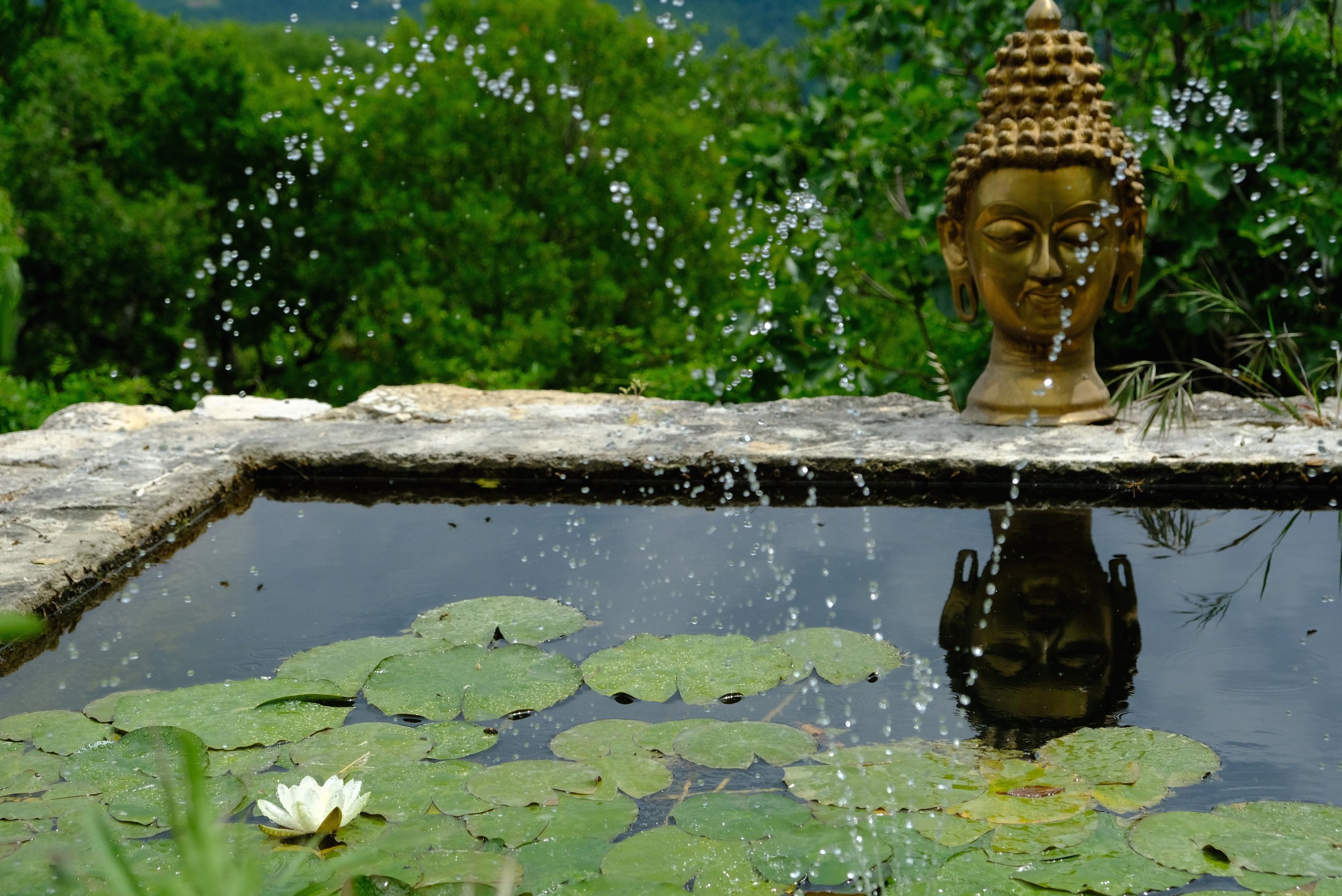I returned from three weeks in England to no running water. The bore hole pump was struck by lightning during recent storms and I had to wait for Monsieur Le Forage (Mr Bore Hole) to order a new pump, which meant a week of driving down to the village to fill up water containers at the communal tap.
It's remarkable how much water we pour down the sink so easily. Using all my water from a bottle made me careful not to waste a drop. The washing up water and my wash water was recycled to flush the loo and water the plants. As inconvenient as it was to be without, my appreciation for clean water became ever greater. As I let it pour from a jug to wash my hands, the coolness and the splashing on my skin felt particularly delicious while the cicadas rasped away in the baking heat. We really can do nothing without water, in fact we are nothing without it.
Apart from the odd thunderstorm and shower, rain is scarce here from May until September. The smaller streams and rivers tend to dry up, many of them run under the rocky ground towards the coast. Even though I have found most locals take seriously the need to conserve water, I notice too how the farmer on the plain nearby extravagantly pumps water over his lettuces during the heat of the day. The same farmer is known for his liberal use of chemicals; the price paid for people expecting lettuces throughout the year. It's easy to forget that traditionally lettuces were considered a treat for springtime, not something to eat in the heat of the summer, by when they have naturally gone to seed.
Dreaming of clear water. The waterfall at Sillons La Cascade
The other thing I came home to was a sizeable hole in my bedroom shutter along with a lot of wood shavings and some tell tale droppings. Somebody had been busy.
Meet the loir.
Serious gnawing has taken place.
I had heard about the loir long before I met it. Indeed, I had often heard the loir itself before that meeting.
Sometimes at night there would be a vigorous scratching and scrabbling about in the wall cavities, in the roof space and on the balcony. I was told it was probably the loir who ate through the wiring to the solar panels, who caused black outs from chomping through yet more electrical wires in the attic.
When I came to visit last September I found all the grapes had been cleared off the vine which grows up the trellis at the front of the house, leaving only the lacy stems. Not one single grape had been left. 'It'll be the loir,' said my neighbours.
The loir, known as the edible dormouse. It was considered a delicacy by the Etruscans and the Romans, who kept them in ceramic jars, fattened them on chestnuts, acorns and walnuts, dipped them in honey and rolled them in poppy seeds before roasting them.
I came face to face with the loir a few weeks ago. I was writing at my laptop when from the corner of my eye I saw the shadow of a tail slip under a nearby chair nearby.
I squealed, leaped into the air and dashed over to the sofa to rouse Betty, who in her younger days was a very fine ratter. I have seen her catch a rat in mid air as it flew out of the compost heap. After watching her sniff around the edges of the arm chair, I took a breath, pushed the chair back, and out shot a furry grey animal, just smaller than a squirrel, and ran promptly over my foot! As I felt the sensation of soft fur and claws on my bare skin, two thoughts converged in my brain. 'this is my idea of a nightmare,' and 'this really isn't as bad as I thought it would be.'
The next thing I knew, it had run directly up the wall and was now clinging to the top of the sliding doors, slipping by its claws as Betty barked frantically below. The creature fixed its enormous eyes upon me and I felt its terror at the same time as my own pounding heart. I gingerly opened the doors, dreading that it might fall upon me, managed to dislodge it with a broom, whereupon the animal shot out into the night, chased by Betty at full throttle.
Since then, I bought some supposedly inaudible sonic deterrents, but the high pitched tone they make seems likely to drive me away before it does the loir, who continues to squeak outside my bedroom window and scamper from one vine trellis to the next with joyful noisy abandon.
Meanwhile, this week the pump was replaced by Monsieur Le Forage and cool, clear water runs out of my taps as the pure magic that it is.

























